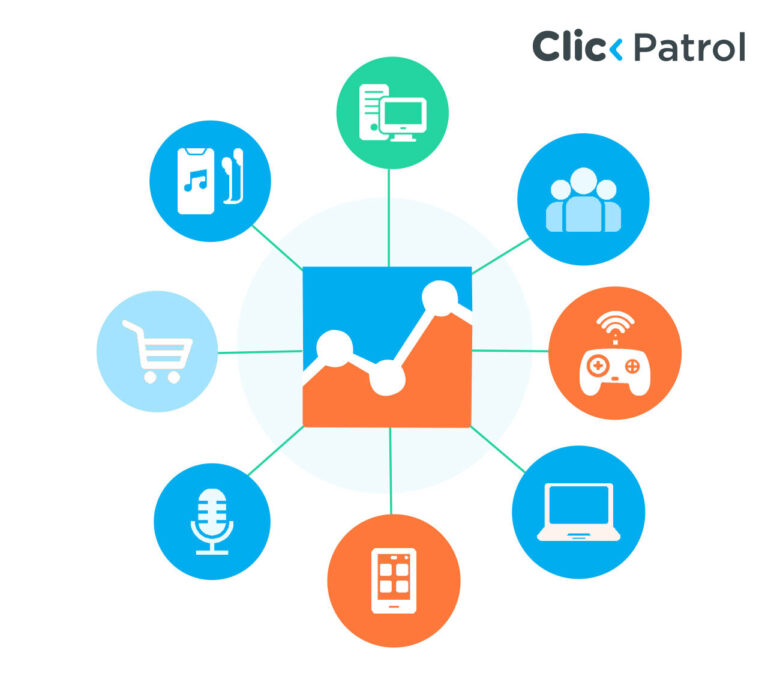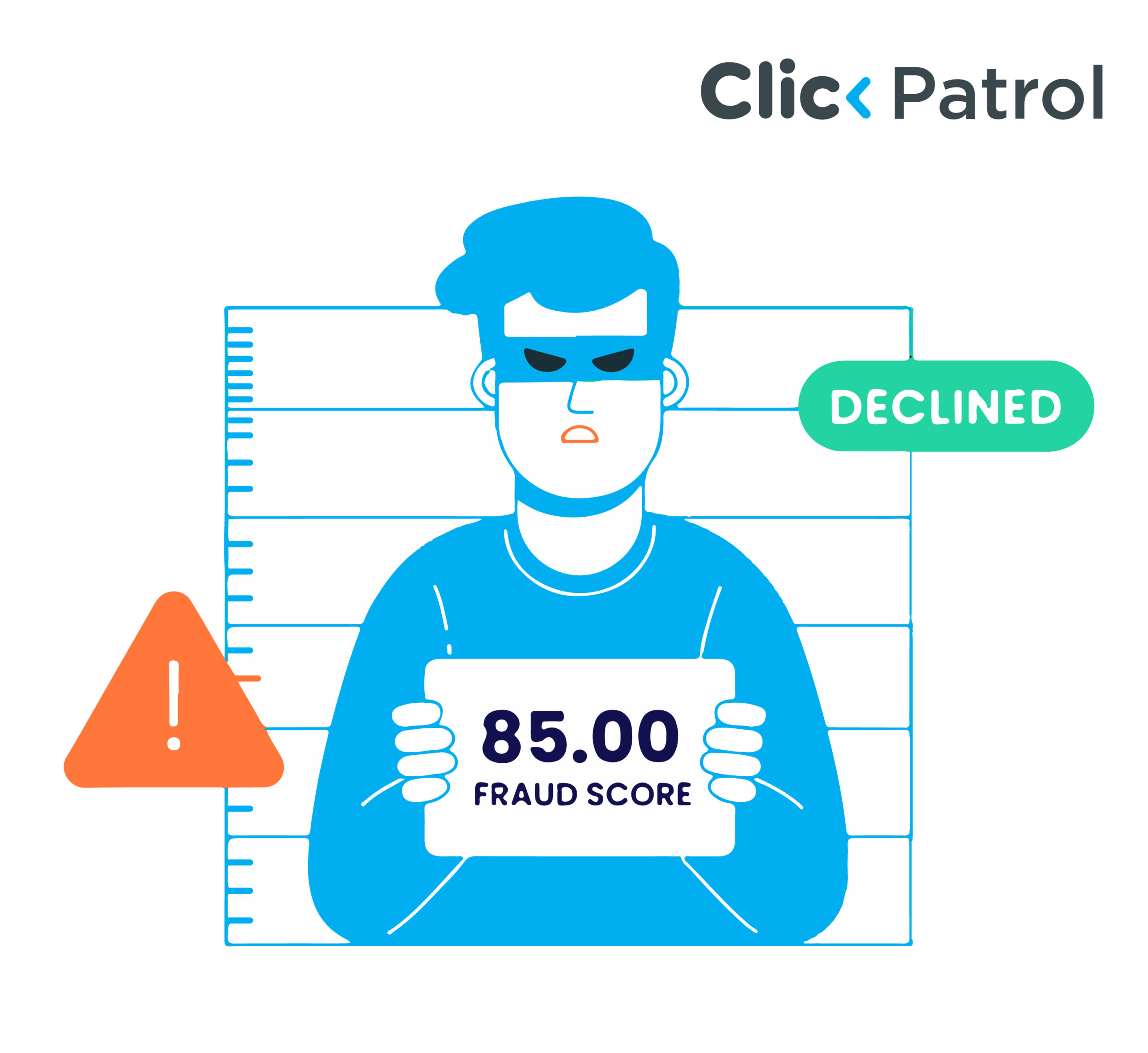
Best Practices for Click Fraud Prevention
Abisola Tanzako | Oct 04, 2024

Table of Contents
- What is click fraud?
- Importance of click fraud prevention
- Common forms of click fraud
- What are the impacts of click fraud on businesses?
- Identifying signs of fake clicks
- 1. High CTR, low conversions
- 2. Sudden spikes in traffic
- 3. Suspicious traffic sources
- 4. Abnormal user behavior
- Best practices for click fraud prevention
- 1. Utilize click fraud protection software
- 2. Traffic pattern monitoring and analysis
- 3. Setup IP exclusion and geo-targeting
- 4. Apply AI and machine learning
- 5. Employ honeypots
- 6. Blacklist
- 7. Audit your ad campaigns on a routine basis
- 8. Set up conversion tracking
- 9. Educate your team
- Safeguarding ad campaigns through best practices
- FAQs
Adequate click fraud prevention strategies can save your business a lot of money.
Click fraud and fake clicks affect businesses of all sizes and industries. It is deceptive behavior when malicious individuals or bots click on PPC ads with no interest in the advertised product or service. This leads to ineffective ads, skewed campaign data, and a decline in the overall ROI of ad campaigns.
With web advertising gradually becoming a significant marketing tool in the modern world, the issue of preventing click fraud has become all the more important. This article explains click fraud, its essentials, and some best practices for avoiding it.
What is click fraud?
Click fraud is when fraudulent individuals or bots generate fake clicks on PPC advertisements. Competitors’ bots can carry out these invalid clicks or click farms. The fraudsters’ primary objectives might differ; their ultimate objectives may be to drain a competitor’s ad budget, increase affiliate revenue, or harm a business by inflating click-through rates.
Importance of click fraud prevention
Click fraud prevention keeps the integrity and effectiveness of a digital marketing campaign at its best. Protecting oneself against fake clicks secures that advertising budgets will not be wasted on non-legitimate engagements, hence assuring them to drive down to genuine customer involvement and conversions. Effective click fraud prevention also enables proper analytics and reporting; this means one can make informed decisions based on reliable data.
This ultimately maximizes ROI and further optimizes ad performance. Additionally, preventing click fraud will help your brand reputation since ads will be viewed by relevant audiences who might be interested in your business. Effective click fraud prevention strategies are essential to long-term growth and success in the competitive digital marketplace.
Common forms of click fraud
Recognizing common forms of click fraud is crucial for businesses looking to protect their advertising investments.
- Manual fake clicks involves intentionally clicking on ads with malicious intent to hurt a competitor or artificially inflate the revenue arising from ad clicks.
- Click farms are organized groups of people who mostly live in low-income parts of the world and get paid for creating invalid clicks. Click farms can create a high volume of clicks that look valid but do not generate any real engagement.
- Bot clicks: In this form of ad fraud, bots or automatic scripts play users’ role by repeatedly clicking on ads. These can be programmed to target specific ads or keywords to get invalid click counts.
- Competitor clicks: An ill-minded competitor clicks on the advertisements of their rivals to exhaust the ad budget of that particular business. Reducing the visibility of competitors and making potential customers consider their offering.
- Invalid clicks involve accidental or unintentional clicking, double-clicking, or clicking from people who have no interest in the advertised product or service. Though harmless, they add to ad spend wastage.
What are the impacts of click fraud on businesses?
Click fraud can significantly impact businesses and their digital marketing efforts. Here are some key impacts:
- Financial losses impact the advertising budget. As advertisers pay for each click, invalid clicks quickly deplete the budget without offering anything valuable. That means a business spends money on clicks that do not lead to customer engagement or sales.
- Skewed analytics and reporting: Invalid clicks distort data, making the actual performance of ad campaigns hard to calculate. Leading to poor decisions and misallocation of resources are the outcomes.
- Impact on ad network relationships: Persistent click fraud problems can impact a brand’s relationship with ad networks. They may require negotiations on refunds or rebalances, and consistent issues will likely result in a loss of trust and collaboration between the advertiser and ad network.
- Legal and compliance risks: Click fraud can also cause legal and compliance issues for businesses because it violates advertisement policy. Businesses that engage in click fraud or are negligent risk legal punishment.
- Competitive disadvantage: Any business hit by click fraud will be disadvantaged when competing, as they will use resources to counter the effects of Invalid clicks. Competitors with better anti-fraud measures will gain superior, high ROI rate advertisement outcomes.
Identifying signs of fake clicks
Recognizing click fraud in its early stages can save a company from wasted ad spend. Here are indicators of click fraud occurring:
1. High CTR, low conversions
If your ad campaign is experiencing a high CTR but very few conversions, it could be a sign of invalid activity. Genuine clicks result in a reasonable conversion rate.
2. Sudden spikes in traffic
Unexpected surges in traffic or clicks indicate the presence of bots or click farms.
3. Suspicious traffic sources
Traffic from regions or websites with a reputation for click fraud should raise red flags. Monitoring the geographic distribution of clicks is vital to detecting fraud.
4. Abnormal user behavior
Users who leave your website quickly, spend minimal time browsing, or only visit a single page may be part of Invalid click schemes.
Best practices for click fraud prevention
There are several best practices for preventing a business from click fraud. Here are some of them:
1. Utilize click fraud protection software
This keeps the traffic updated and analyzes and prevents Invalid clicks. This technology software uses algorithms to pick out anomalies. Such tools and platforms are developed to detect and prevent fake click activities targeting your online ads. They can trace unusual patterns and block suspicious clicks in real-time. An example is ClickPatrol, which blocks IP addresses automatically as they emanate from click fraud.
2. Traffic pattern monitoring and analysis
Conventional monitoring of your traffic can help quickly identify suspicious patterns and spikes. Check for a high bounce rate, low conversion rate, and multiple clicks from the same IP address.
3. Setup IP exclusion and geo-targeting
Geotargeting directs your ads to specific geographic regions by excluding certain IP addresses known for invalid clicks. This will help limit click fraud and enable you to focus your ad budget on real prospective customers.
4. Apply AI and machine learning
AI and machine learning can sift through large volumes of data, searching for patterns indicative of click fraud. These technologies improve over time and are very effective in fraud prevention.
5. Employ honeypots
These are traps set to detect and counteract fake clicks. They might be able to watch out for fake clicks and show fake ads that could be clicked by bots or fraudsters alone, thus helping to filter out malicious traffic.
6. Blacklist
Maintain a blacklist of fraudulent-known IP addresses and domains. A continuously updated list will ensure that your ads do not feature before sources known to create fake clicks.
7. Audit your ad campaigns on a routine basis
Regular audits of your ad campaigns help find misuse in the places your ads appear. These audits also allow you to check for disparities in CTR and conversion rates, which are generally indicative of click fraud.
8. Set up conversion tracking
You can measure the results of your ads and what happens after someone clicks on your ad. If you are getting a lot of clicks but very few conversions, that could be a guarantee that click fraud is taking place. Conversion tracking will help you identify these issues sooner and deal with them how you want.
9. Educate your team
Your marketing and advertising teams must know click fraud and its meaning. This will allow you to train them to recognize specific signals of click fraud and understand the various tools and strategies available to prevent it, thereby giving them more protection from invalid activities.
Safeguarding ad campaigns through best practices
Click fraud can seriously threaten businesses that rely on online advertising. However, by implementing the right tools and strategies, businesses can prevent these threats, secure their marketing budgets, and give integrity to their ad campaigns. From best practices like click fraud detection software and IP exclusions to frequent auditing, these best practices help businesses outsmart fraudsters.
Since click fraud techniques change frequently, advertisers need to remain active and flexible with the latest prevention technologies.
FAQs
Q. 1 How would I know that click fraud affects my ad campaigns?
The symptoms may include unusually high CTR but low conversions, sudden spikes in traffic, and other abnormalities in user behavior, such as a high bounce rate and a lot of time on site.
Q. 2 What tools are available to help avoid fake clicks?
ClickPatrol and the built-in features on Google Ads can help you avoid click fraud.
Q. 3 How will geo-targeting help in the prevention of fake clicks?
You can minimize the chances of fake clicks by reducing your ad targeting areas to those with legitimate users and removing your ad areas from where invalid activities are suspected.
Q. 4 What are my options for filing a legal complaint if I am victimized by click fraud?
Click fraud is against the law in many places. As companies, we can sue perpetrators of click fraud, and in litigating these cases, keeping good records of fake click activity becomes important.





